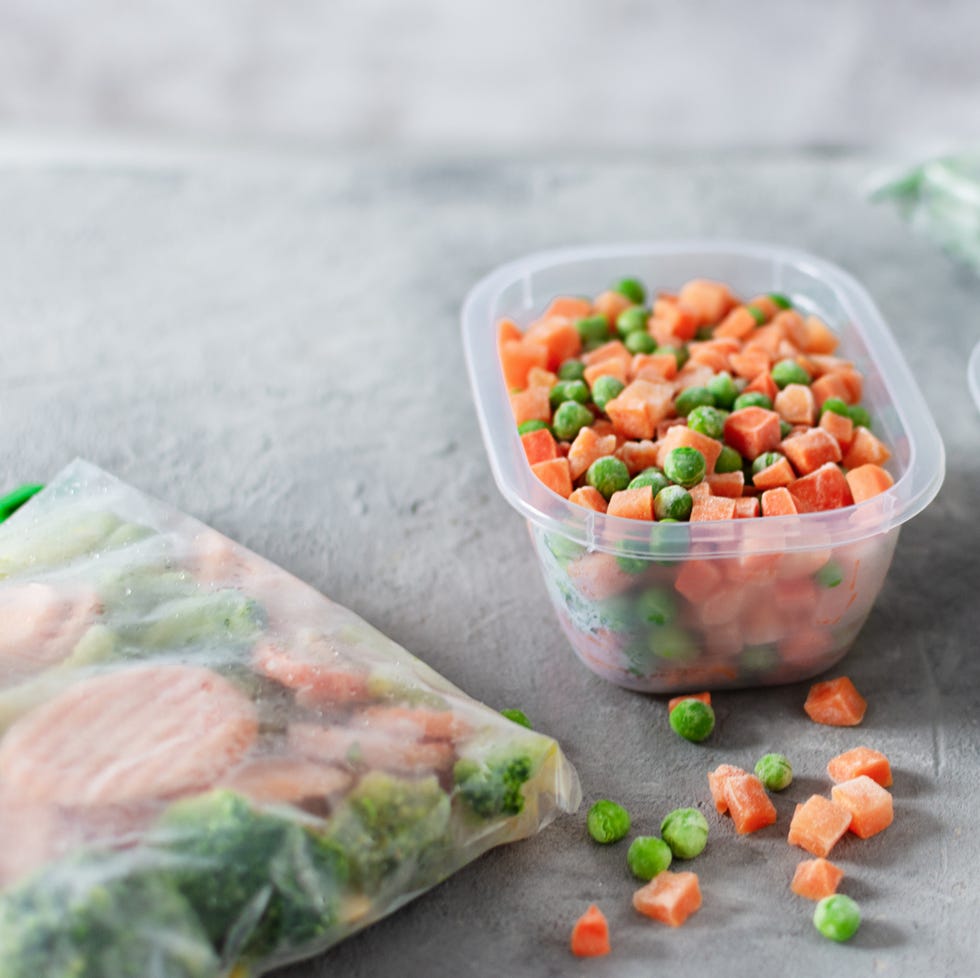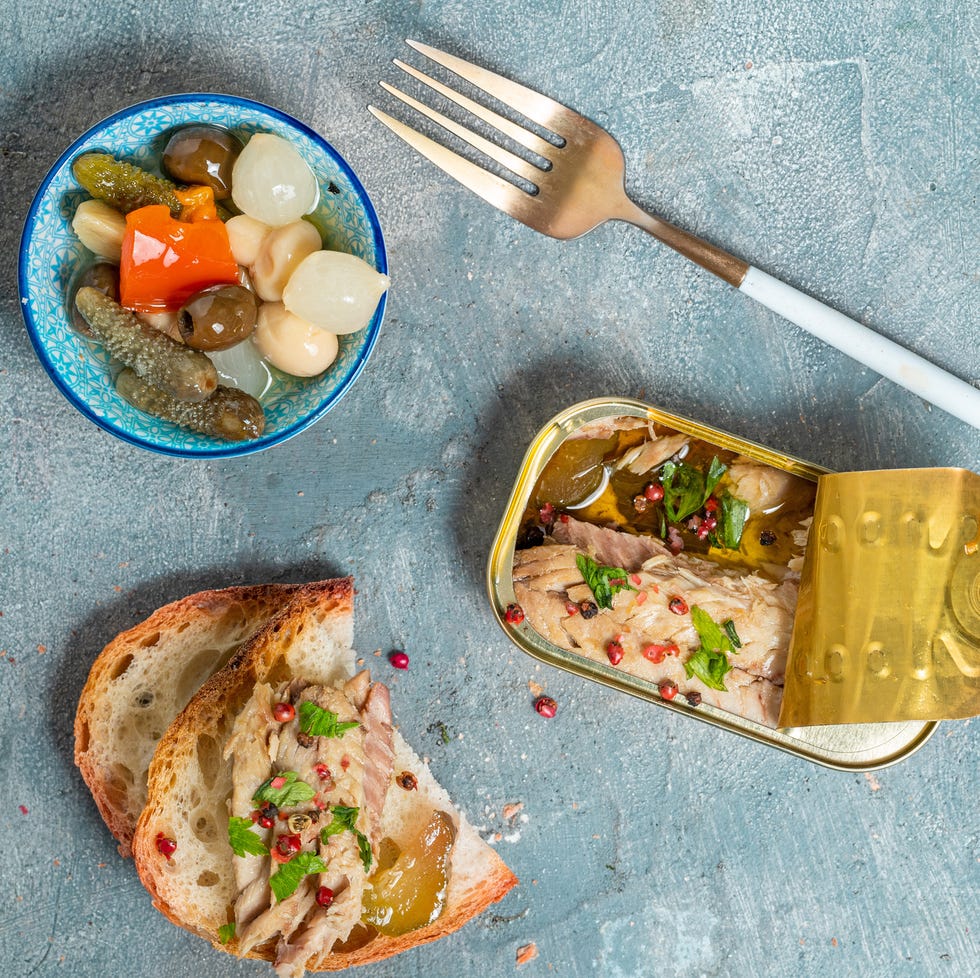Weight loss is a personal journey, but like many things in life, being able to make informed decisions can lead to desired outcomes, and this is also true when shopping for food. Your weight loss journey starts in the grocery aisle — and not just the outer aisles where the fruits and veggies reside. The middle aisles can have nutritious options too, especially legumes and whole grains.
To lose weight you must be eating fewer calories than you burn, and while weight loss happens with a reduction of calories consumed, eating nutrient-dense foods rich in vitamins, minerals, fiber and lean protein is the key to sustainable weight loss and improved overall health. The best diet for you is the one that you can stick with for the long term. Filling your refrigerator and pantry with nutritious foods and having quick, easy and healthy ingredients on hand can help you avoid filling up on empty calories.
All calories are not created and studies show that the quality of foods we consume and following a diet that is low in refined flour and sugars matter more than the exact number of calories consumed. Diets higher in processed foods may promote weight gain by leading to overeating.
More From Good Housekeeping

Here is a list of foods we recommend filling your grocery cart with.
Editor’s note: Weight loss, health and body image are complex subjects — before deciding to go on a diet, we invite you to gain a broader perspective by reading our exploration into the hazards of diet culture.
Produce
Fruits and vegetables are some of the top foods associated with weight loss and weight maintenance because they are low in calories and high in fiber. That means you can eat a lot of them, and the fiber they contain helps to keep you feeling full longer. Aim for five servings of fruits and vegetables per day. According to studies, a higher intake of these foods is associated with improved long-term health and reduced risk of cardiovascular disease and type II diabetes.
Fresh Fruit
Fresh Vegetables
Frozen Foods
Frozen fruits and vegetables may contain more nutrients than fresh foods because, often, they are flash-frozen right after harvest. Keep frozen fruit in your freezer for a quick smoothie or to add to yogurt. Frozen veggies can boost any omelet and can be used in soup and stir-fries. Add some frozen spinach to your smoothies. Avoid prepared frozen meals that contain high sodium and high sugar counts.
- Artichokes
- Berries
- Broccoli
- Cauliflower rice
- Fish
- Edamame
- Peas
- Mixed veggies
- Sweet potato wedges
Refrigerated Section
A lot of your lean protein options can be found in the refrigerated section. Yogurt, for example, is versatile, quick and easy although it can often be full of added sugar. We recommend choosing non-fat or low-fat Greek and/or skyr yogurts that contain more protein per serving than regular varieties. Plain or no-added-sugar flavors are best.
If you prefer plant-based yogurts and milks, keep in mind that they can be high in fat and sugar and low in protein, so be sure to read the labels. Aim to stay under 8 grams (equal to two teaspoons of sugar) or less of sugar per serving.
- Eggs (or egg alternatives)
- Hummus
- Lean meats: fish, poultry, turkey
- Low-fat or fat-free cheese and cottage cheese
- Low-fat or fat-free plain Greek or skyr yogurt
- Dairy-alternative milks and yogurts
- Soy: tofu, tempeh
Shelf Stable
Pantry items are good to stock up on because of their extended shelf life. They can come in handy for quick and easy meals but they can sometimes be very high in sodium, such as canned soups and veggies. Make sure to read the labels and look for “no-added sodium” or “low-sodium” options. The U.S. Food and Drug Administration (FDA) recommends limiting daily sodium intake to less than 2,300 mg per day, the equivalent of 1 teaspoon.
Consider swapping out refined grains for whole grains that can contain more fiber, antioxidants, vitamins and minerals. With cereals, pastas and wraps, look for products that have 3 grams of fiber or more per serving and contain whole grain ingredients as the first ingredient, such as 100% whole wheat or quinoa. Watch out for added sugars and look for options that do not include them.
- Beans: black beans, cannellini beans, chickpeas, kidney beans, lentils
- Broths and stock
- Canned fish: tuna, wild salmon, sardines
- Canned produce: green beans, jackfruit, tomatoes
- Coconut aminos
- Low-carb noodles: Palmini, spaghetti squash
- Nuts and seeds: almonds, cashews, walnuts, chia, flax, hemp, sunflower seeds
- Oil and vinegar: apple cider vinegar, avocado oil, olive oil, balsamic vinegar, red or white wine vinegar, rice wine vinegar
- Salsa
- Seltzers
- Tomato sauce
- Herbs and spices: basil, cinnamon, cumin, garlic powder, onion powder, oregano, thyme, turmeric, red pepper flakes, etc.
- Whole grain cereal
- Whole grains: oats, quinoa, wild rice
Meal Suggestions
Now that you have your groceries, you need to know what to do with them. Here are some of our healthy meal and snack suggestions incorporating items from the grocery list above.
Breakfast
- Yogurt parfait layered with berries, pomegranate arils, chia, nuts and seeds, topped with a cinnamon sprinkle or citrus zest
- Egg scramble or omelet prepared with spinach, peppers, and low-fat cheese.
- Chia pudding made with nut milk, protein powder and berries
- Smoothie made with protein powder or low-fat or non-fat Greek yogurt, fresh or frozen spinach, frozen berries, cinnamon, nut milk and chia seeds
Lunch
- Salads with lettuce, carrots, artichokes, tomatoes and olives, topped with frozen/fresh/canned fish or chicken
- Cauliflower rice bowl with low-fat protein (chicken, fish or beans), sautéed veggies and sliced avocado
- Whole grain tortilla wrap with lettuce, tomato, turkey (or tempeh), low-fat cheese and mustard
Snacks
- Apple with nut butter
- Low-fat or non-fat Greek or skyr yogurt parfait with berries, cinnamon and lemon zest
- Popcorn
- Hummus and veggies
- Olive or artichoke individual-sized snack packets
Dinner
- Burrito-style bowl with cauliflower rice, beans, lettuce, salsa, guacamole, chicken or ground turkey or tempeh, low-fat Greek yogurt and shredded low-fat cheese
- Turkey meatballs with spaghetti squash or zoodles
- One-sheet pan dinners with chicken, chickpeas, peppers and harissa spices.
Treats
- Date stuffed with nut butter
- 70% dark chocolate
- Fresh pineapple chunks with cashews
- Yogurt bark
Shopping Tips for Weight Loss
✔️ Never shop hungry: This can lead to making impulsive purchases. Go to the store with a plan and a list and choose nutritious whole foods over processed foods high in refined sugar and sodium.
✔️ Drink smarter: Replacing sugary sodas and fruit juices with water and/or low-calorie flavored seltzers can be a first step for many people trying to lose weight. This swap alone can eliminate hundreds of calories per day for some.
✔️ Prepare simple and mindful meals: Meals don’t need to be complicated. Choose a lean protein (i.e., chicken, turkey, fish, beans), veggies, a whole grain (i.e., quinoa, wild rice) and a healthy fat (i.e., sliced avocado, a drizzle of olive oil) as your meal. Instead of eating in front of the tv, eat at a table with minimal distractions so you can enjoy every bite. Studies show that mindful eating may be an effective tool in weight management.
✔️ Meal prep: Planning meals ahead of time can help with weight loss and weight management, according to research. Preparing your menu beforehand can help to create balanced meals, increase variety in your diet and may even assist with portion control if meals are individually packaged. It can also help to reduce waste.
✔️ Keep it social: As with everything, having a strong support system will help to keep you on track. Join an online forum or do it with a friend or family member.
✔️ Start moving: Take a walk after dinner or lunch or whenever your schedule allows and aim for the Center for Disease Control (CDC) recommended goal of “150 minutes of moderate-intensity aerobic physical activity each week.”
The Bottom Line: The secret to weight loss is that there is no secret. It all boils down to eating fewer calories than you expend and doing it in a way that leads to improved health and energy levels. Weight loss strategies that may work for one person, may not work for another. But consuming less sugar and fewer refined grains is a good place to start.
Be strategic about your grocery haul and fill your cart with whole foods — fruits, veggies, lean proteins, healthy fats, whole grains, etc. — and get moving. Keep a journal if it helps you and try to identify patterns that may be hampering your success or join a support group to provide accountability. Explore what works best for you. If you prefer to order your meals, check out our best meal delivery services for weight loss. You may also find inspiration in our 8-Week Healthy Habits guide.
Contributing Writer
Amy (she/her) is a registered dietitian with the Nutrition Lab at the Good Housekeeping Institute, covering nutrition- and health-related content and product testing. She holds a bachelor’s degree in journalism from Miami University of Ohio and a master’s degree in clinical nutrition from NYU. Prior to Good Housekeeping, she worked at one of the largest teaching hospitals in New York City as a cardiac transplant dietitian. She has authored numerous chapters in clinical nutrition textbooks and has also worked in PR and marketing for food company start-ups.






